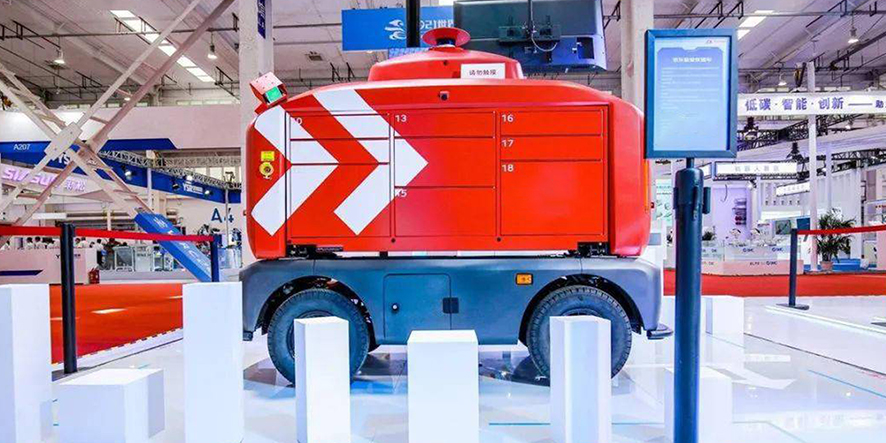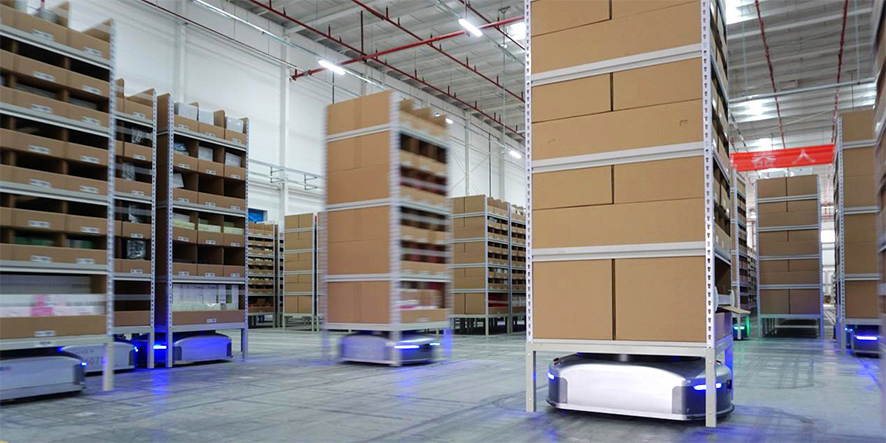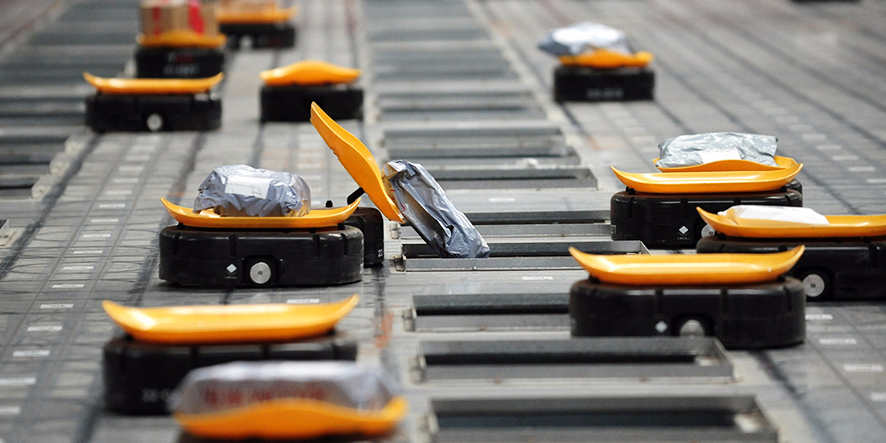1. Development status of logistics robots in China
With the rapid development of the human economy, the rise in labor costs, and the popularization of artificial intelligence, robots have gradually penetrated the logistics industry, optimizing and improving logistics resources, logistics processes, and logistics efficiency, and accelerating the development of the logistics industry.
In the field of warehousing robots, domestic technological research started relatively late, with most warehousing and logistics robot manufacturers established for less than 5 years and developing rapidly. However, opportunities and challenges coexist. In recent years, the “new retail” driven by e-commerce has required warehousing systems to be more intelligent and flexible.
The “goods to people” warehousing robot can quickly and in parallel complete various tasks such as shelving, picking, replenishment, return, inventory, etc., and there is a huge demand in e-commerce logistics centers. The establishment of intelligent warehousing and the development of smart factories will bring about the large-scale application of palletizing robots, and the market size will further expand. In 2023, the market sales will exceed 100000 units, and the market size is expected to exceed 16.5 billion yuan.
In terms of delivery robots, urban delivery unmanned vehicles rely on technologies such as autonomous road condition recognition and intelligent task planning to build an efficient urban short distance logistics network. Nowadays, major logistics enterprises have increased their research and development efforts in logistics robots and actively laid out intelligent logistics systems.

2. Development of key core technologies for logistics robots
Compared with foreign robots, China’s logistics robots have outdated core technology and severe competition for homogeneous products. The cost of core components such as high-precision reducers, high-performance servo motors and drives, and high-performance controllers accounts for 70% of the cost of domestic robots, which is a technological bottleneck restricting the development of China’s robot industry. However, the market prospects are broad.
At present, the number of logistics robot component suppliers in China is constantly increasing, indicating that the independent innovation ability of core components has been enhanced. In the future, it is necessary to improve technological stability and batch production capacity, break foreign technological barriers and long-term dependence on imports. In addition, the deep integration of 5G, the Internet of Things, intelligent algorithms, and perceptual recognition technology in the logistics field will promote the development of iconic and high value-added intelligent logistics robot products, becoming a new growth point for logistics robots.
3. Industry standardization accelerates product landing in domestic and foreign markets
The logistics robot market in China is currently in its early stages, with an unregulated market, low industry standardization, lagging product standards, and low user recognition of product functions.
In order to promote the development of the industry, the country has introduced relevant standards. For example, in 2019, the National Automation System and Integrated Standardization Technical Committee reviewed and passed the “General Technical Specification for Logistics Robot Information System”. In June 2020, the National Development and Reform Commission and the Ministry of Transport issued the “Implementation Opinions on Further Reducing Logistics Costs”. In July 2020, the National Development and Reform Commission and 13 other departments issued documents supporting autonomous driving, automatic loading and unloading and stacking In August 2020, the Ministry of Transport issued relevant guidance on the construction of smart transportation infrastructure and smart logistics for unmanned delivery application infrastructure.
But it should be noted that the mandatory nature of these standards is not enough. There is no complete and unified national standard system, and there is a significant gap between logistics robots and foreign countries in terms of key components, core algorithms, etc., resulting in limited application of logistics robot products in China. Exporting domestic logistics robot products to overseas markets requires different certification standards, such as UL certification in the United States, CE certification in the European Union, and KC certification in South Korea. Enterprises need to develop standards from various aspects such as production control, technological research and development, product quality, safety and environmental protection, fully understand customer needs, and customize solutions for customers based on standard products.
4. Win-win development of logistics robot industry chain
Despite the rapid development of China’s logistics robot industry driven by policy support and cutting-edge technology, the disorderly competition in the market and the high cost of key technologies have led foreign enterprises to dominate the market.
The proportion of industrial robot suppliers in China’s domestic market has increased from 10% in 2014 to 35% in 2019, while most of the market is still dominated by global first tier suppliers such as Fanuc, Yaskawa, ABB, and Kuka. It is predicted that the market share of global first tier suppliers may decrease to 40% by 2025, which means that the R&D and production capacity of domestic robot suppliers is expected to be further improved, and resource integration can be achieved through industry mergers and acquisitions.
In the future, China’s logistics robot industry needs to fully utilize open innovation methods such as industry chain collaborative research and development capabilities, cross domain integration, and open source robot operating systems to develop logistics robot products from the perspective of customers, helping them improve work efficiency, reduce costs, and create value.
Shenzhen Zhongling Technology, as a supplier of hub servo motors and drives, has not only provided high-precision hub motors and drives for the logistics industry, but also diversified services for logistics robots, from no tire marks, providing protection levels, saving energy consumption, customizing brake systems, limiting maximum speed, increasing tire grip, detachable tires, customizing special programs, and many other aspects, Maximizing the satisfaction and enrichment of various functional indicators of logistics robots, promoting the diversified development of logistics robots.
Post time: Aug-09-2023


